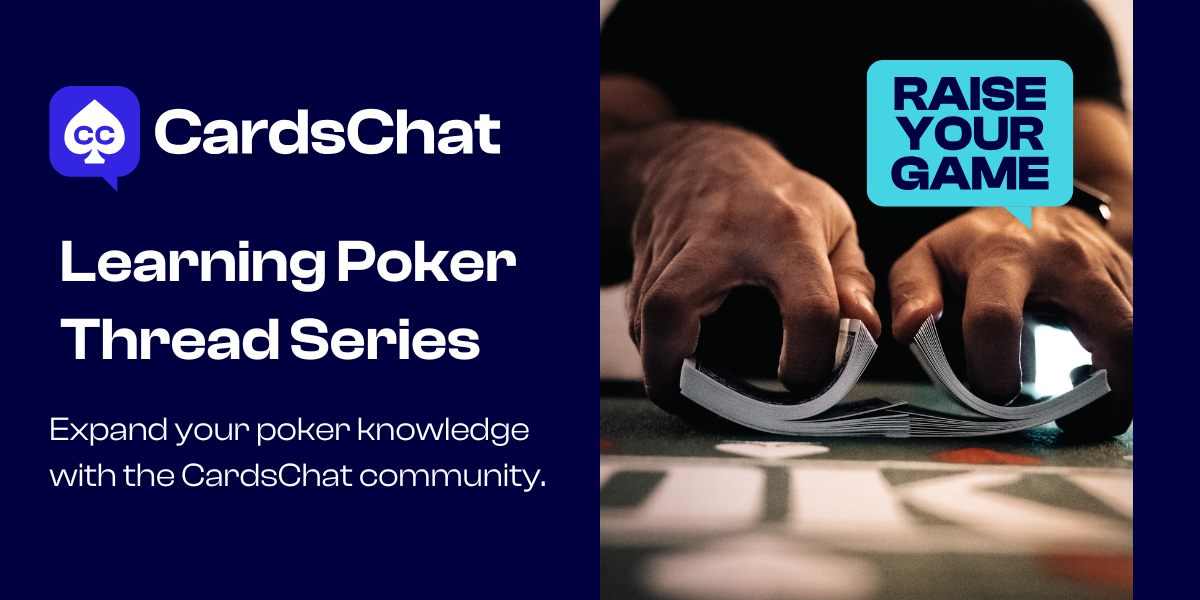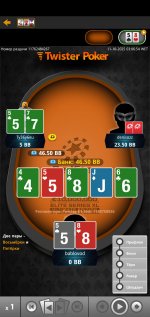CRStals
Moderator
Moderator
Heads-up battles in a tournament can be intense. While they may not always replicate the true heads-up action you'll face when you're down to the final two in an MTT (Multi-Table Tournament), gaining experience in heads-up play is invaluable. Today, the quickest, cheapest, and easiest way to practice heads-up poker is by playing Spin n Go’s. These fast-paced tournaments are available on nearly every major online poker site.
What to do:
What to do:
What to do:
What to do:
What to do:
🔔 Subscribe to the CardsChat Learning Series
So you never miss the next drop! Turn on notifications and keep sharpening your edge — one position at a time.
You can find all our poker learning series right here: CardsChat Learning Poker Thread Series Guide

🔍 What We’ll Cover:
- Why Spin n Go’s Are Great for Practicing
- Basic Strategies for Playing Three-Handed
- Basic Strategies for Playing Heads-Up from the Button
- Basic Strategies for Playing Heads-Up from the Big Blind
- How Play Changes with Big Multipliers
💥 Why Spin n Go’s Are Great for Practicing
If you're serious about practicing short-handed play in poker, Spin n Go’s are a great tool. Here’s why:- Short-Handed Play: Spins start 3-handed or 4-handed, which means you’re much more likely to find yourself heads-up.
- Low Risk: Buy-ins for Spin n Go’s can be as low as $0.25, so you can practice without risking too much of your bankroll.
- Quick Action: Once you register, you can start playing within minutes (or even seconds).
- Big Prizes: If you’re lucky, you might hit a big multiplier and play for a huge first-place prize.
- No Big Blinds/Hyper Nature: The lack of large stacks and the hyper-turbo structure means the game moves fast. This can be a little different from the heads-up play you’ll encounter in MTTs, but it will force you to expand your range and adapt quickly, which is excellent practice.
💥 Basic Strategies for Playing Three-Handed
Spin n Go’s start with three players, and there are some key differences compared to regular sit-n-go tournaments:- Starting Stacks: Most common starting stack size is 25 big blinds, but this can vary.
- Winner Takes All: In most cases, the winner takes everything, unless you hit a jackpot multiplier.
- Hyper Turbo Blinds: Blinds increase every 3 minutes, so the action is fast.
Key Strategy: Play Aggressive
With short stacks and fast blinds, you need to play aggressively to avoid being blinded out. Your VPIP (voluntarily put money in pot) should rise to 30-45%, depending on your opponents.Button Play
When you’re on the button, you have a huge advantage:- You’ve invested no chips pre-flop, and there’s already money in the pot.
- In a regular Sit-n-Go, there might be 450–900 big blinds to start, but in a Spin, there are only 75 big blinds total.
- Raise often: If your opponents are tight, raise almost 100% of your hands. Steal those blinds!
- Post-flop: Trap your opponents when you hit the flop hard and allow them to bluff into you.
Small Blind Play
The small blind is a tough position in a 3-handed Spin. You're already invested and will face raises from the button.What to do:
- Three-bet aggressively: Expand your three-bet range and be prepared to shove more often.
- Avoid min-raising: The big blind has great odds to call, and you’ll be out of position on large pots.
- Post-flop: Play straightforwardly – only play hands that connect well with the board.
Big Blind Play
The big blind is the most dynamic position because you’ll be involved in a lot of pots.What to do:
- Wide calling range: Since you’re getting good odds to call, consider playing almost every hand.
- Mix up your play: Sometimes call, sometimes three-bet shove to keep your opponents guessing.
- Trapping: If the button is overly aggressive, let them bluff, and then check-shove to win the pot.
💥 Basic Strategies for Playing Heads-Up (HU) from the Button
When you’re heads-up from the button, adopt a mindset similar to a full MTT: win as many pots as possible. Given the turbo structure, you'll need to be very aggressive.What to do:
- Raise more: Don’t min-raise! This gives your opponent 3-to-1 odds, which they’ll often call.
- Limping: Mix up your strategy by limping and raising with your entire range. This keeps your opponent guessing and prevents them from adjusting easily.
- SPR (Stack-to-Pot Ratio): In heads-up play, you’ll find yourself in situations where shoving is the best option. Don’t wait too long to recognize it.
💥 Basic Strategies for Playing HU from the Big Blind
When you're in the big blind heads-up, your job is to make the button pay when you catch a good hand.What to do:
- Call wide: When the button min-raises, you’re getting great odds to call. Don’t fold too often, as the pre-deal investment is already there.
- Three-bet shove: If the button is raising too often, don’t hesitate to three-bet shove with a wide range.
- Post-flop: Be aggressive or controlled—either bet big or check-call when you have showdown value.
💥 How Play Changes with Big Multipliers
When you hit a big prize multiplier (like 25X or 1000X), you might see a shift in player behavior. Some players over-adjust and play too conservatively, fearing the large prize.What to do:
- Target the over-adjusters: Players who fold more when the prize pool is large tend to get eliminated early. Use this to your advantage!
🎯 Summary
Spin n Go’s are one of the best ways to practice heads-up poker. With low buy-ins, fast-paced action, and frequent heads-up scenarios, they’re a fantastic tool for building your heads-up game. The key to success is learning how to adjust to opponents, wait for the right spots, and maximize your opportunities. Great players know how to close out tournaments and turn these short-handed games into big wins.💬 How Do You Approach Spin n Go’s?
Do you play Spin n Go’s often? What strategies have you found to be successful when facing off heads-up? Share your thoughts and let’s help each other strengthen our heads-up game!🔔 Subscribe to the CardsChat Learning Series
So you never miss the next drop! Turn on notifications and keep sharpening your edge — one position at a time.
You can find all our poker learning series right here: CardsChat Learning Poker Thread Series Guide

Last edited:




















